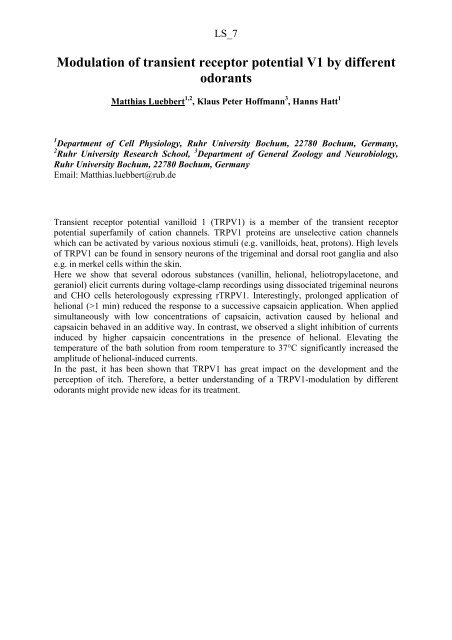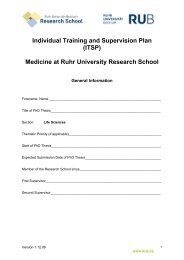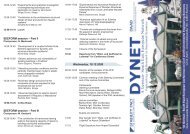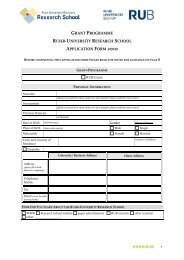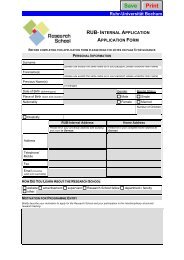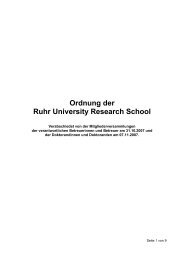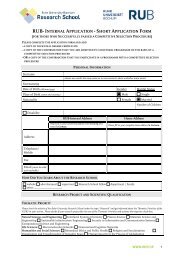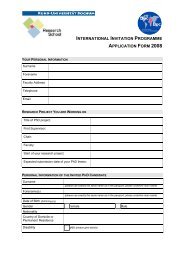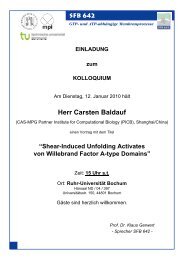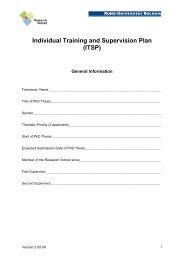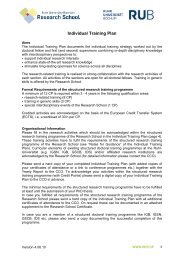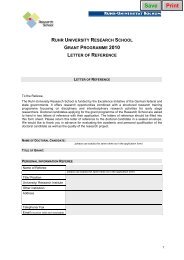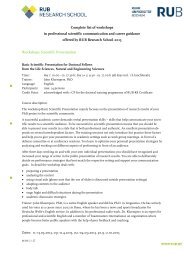Section Days abstract book 2010.indd - RUB Research School ...
Section Days abstract book 2010.indd - RUB Research School ...
Section Days abstract book 2010.indd - RUB Research School ...
You also want an ePaper? Increase the reach of your titles
YUMPU automatically turns print PDFs into web optimized ePapers that Google loves.
LS_7<br />
Modulation of transient receptor potential V1 by different<br />
odorants<br />
Matthias Luebbert 1,2 , Klaus Peter Hoffmann 3 , Hanns Hatt 1<br />
1 Department of Cell Physiology, Ruhr University Bochum, 22780 Bochum, Germany,<br />
2 Ruhr University <strong>Research</strong> <strong>School</strong>, 3 Department of General Zoology and Neurobiology,<br />
Ruhr University Bochum, 22780 Bochum, Germany<br />
Email: Matthias.luebbert@rub.de<br />
Transient receptor potential vanilloid 1 (TRPV1) is a member of the transient receptor<br />
potential superfamily of cation channels. TRPV1 proteins are unselective cation channels<br />
which can be activated by various noxious stimuli (e.g. vanilloids, heat, protons). High levels<br />
of TRPV1 can be found in sensory neurons of the trigeminal and dorsal root ganglia and also<br />
e.g. in merkel cells within the skin.<br />
Here we show that several odorous substances (vanillin, helional, heliotropylacetone, and<br />
geraniol) elicit currents during voltage-clamp recordings using dissociated trigeminal neurons<br />
and CHO cells heterologously expressing rTRPV1. Interestingly, prolonged application of<br />
helional (>1 min) reduced the response to a successive capsaicin application. When applied<br />
simultaneously with low concentrations of capsaicin, activation caused by helional and<br />
capsaicin behaved in an additive way. In contrast, we observed a slight inhibition of currents<br />
induced by higher capsaicin concentrations in the presence of helional. Elevating the<br />
temperature of the bath solution from room temperature to 37°C significantly increased the<br />
amplitude of helional-induced currents.<br />
In the past, it has been shown that TRPV1 has great impact on the development and the<br />
perception of itch. Therefore, a better understanding of a TRPV1-modulation by different<br />
odorants might provide new ideas for its treatment.


